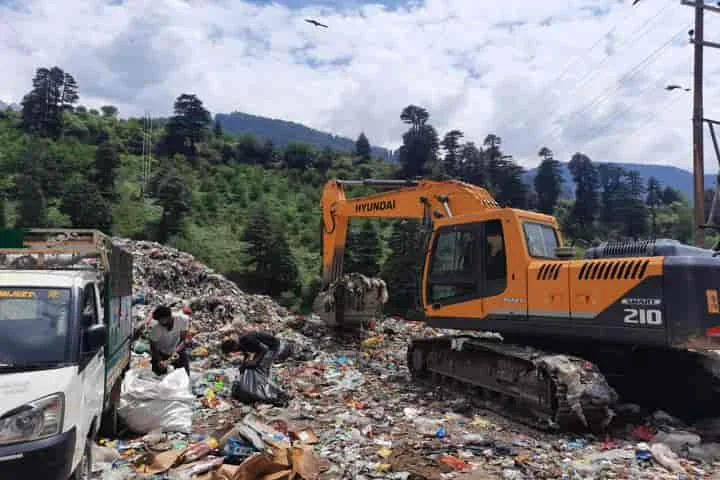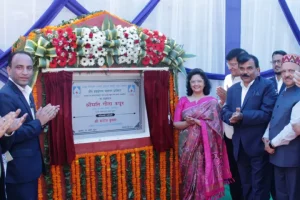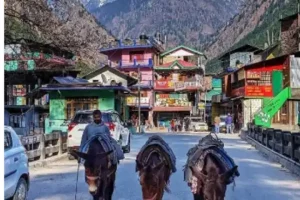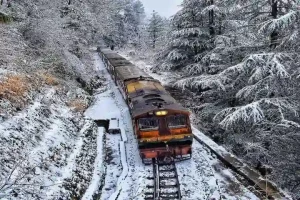Next time when you plan your holiday or even a weekend break in Manali don’t forget to pack garbage disposal bags with you.
In fact, this could well be an advisory that millions of tourists thronging Manali—the world famed destination in Himachal Pradesh—may need to follow ahead of their visit Himachal’s famed tourist destinations in the Himalayas, the young mountain range with a fragile ecology.
As the tourists arrived in droves, to make up for their isolation during two years of Covid, the town now finds itself completely buried under the heaps of urban waste.
“Manali was badly stinking as the municipal committee could not comprehend the dangerous side of happy-go-lucky tourists giving business to the hoteliers' lobby and restaurant owners,” says Sanjay Dutta, a local environmentalist and journalist.
Waste plastic bags — a highly non-biodegradable waste though banned in the state, apart from chips wrappers, empty plastic bottles, empty whisky and wine bottles and daily waste generated from hotels, homestays and restaurants makes life hell for the sanitation workers of Municipal Committee Manali to manually handle the load of daily waste.
Several hundred tons of dry and wet garbage was left behind at Manali. In fact, the Kullu-Manali National Highway bore signs of the overflowing filth. Monsoon rains have further messed -up the waste, which is finding itself into the Beas river, threatening to cause another environmental disaster.

“We are ashamed to see how the tourists left their ugly signs and dirty footprints. The Municipal committee is also unable to inculcate a minimal civic sense. Also, the waste management system is totally in the mess, “ says Anup Thakur, a hotelier and former President of the Manali Hoteliers and Restaurants Association.
That's the only solutions people see with garbage in Manali. pic.twitter.com/NRGYUQ6wq2
— healing himalayas (@healinghimalaya) May 9, 2017
During the peak tourist season, Manali generates around 55 to 60 tons of dry garbage every day but because of the poor disposal system. The overflowing dustbins then attract stray cattle, dogs and monkeys further adding to the mess.
Manoj Larja, Vice-President Manali Nagar Parishad admits that a heavy footfall of the tourists did create a serious problem of garbage management. Yet he says this is bigger problem that dogs most hill designations in Himachal Pradesh, Uttarakhand and also Kashmir.
“Nevertheless, we have taken prompt action to clean-up the town and also ensure that it doesn't pollute the Beas. Not a drop of sewage is going to the river. We have a proper treatment system. Solid waste management is an issue which was being addressed at different levels because our plan to commission waste to energy plants failed to take off. The constructer gave-up the project “ he maintains.
The 13059 feet Rohtang Pass – which was a gateway to Lahaul Spiti and Leh – Ladakh till Atal Rohtang Tunnel was made operational in 2020, had been the worst polluted and ecological degraded high-altitude pass.
Visited by thousands of tourists in a single day during the peak summers, the Pass could have met its unnatural death by now had the National Green Tribunal (NGT) not imposed a ban on tourist activities.
In 2010, an expert Committee constituted by Himachal Pradesh High Court had found that nearly 10,000 persons and nearly 3600 (75% taxis) go to the Rohtang Pass per day in the months of May and June, every year, whose number is continuously increasing. The available amenities and facilities for tourists are becoming insufficient and thus, the carrying capacity of this highly ecologically sensitive place has virtually crossed its physical and ecological limits.
Only 12000 vehicles, of which 400 diesel cars are allowed to go up to Rohtang Pass.
Currently, the waste from Rohtang Pass, left Beas River Bank of Manali and Solang and Manali is collected and disposed of at the garbage treatment facility outside the town at Rangari. But that too is proving insufficient for handling the large quantities piling up on the streets and road sides, admits Sanjay Dutta.
The National Green Tribunal (NGT) some years back had also told the Manali civic body to efficiently handle the issue so that it doesn’t end up harming the Beas River.
Larja says the Municipal Council of Manali also sends the solid waste to a cement plant at Barmana for its management. The efforts are still underway to ensure that the proposed plant for garbage power is set-up soon.
“The problem of the garbage aggravates during the peak tourist season. The Municipal council lacks capacity and resources to handle the waste generated due to the presence of tourists. I have my next priority to find a solution to this burgeoning environmental issue,” informs Deputy Commissioner Kullu Ashutosh Garg.
Also Read: Himachal Pradesh’s fragile ecology under stress–natural disasters surge during monsoons




















